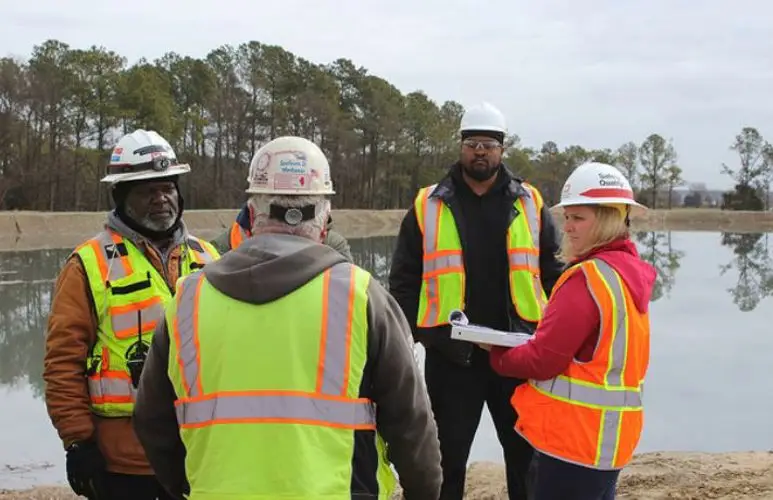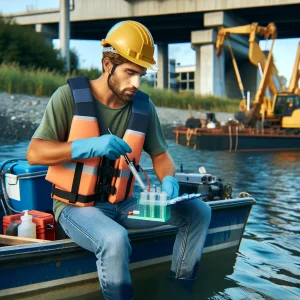Description
Piping Plover Environmental Considerations for Construction Online Training Course
When working in building development and construction, you often encounter environmental issues that require attention. In projects like dredging and beach replenishment operations, Piping Plover Construction Training is essential for monitoring this endangered species. Project specifications will list these requirements if monitoring is necessary, emphasizing the importance of Piping Plover Construction Training in ensuring compliance and protecting the environment.
To help address the specific risks these birds face, we developed the “Piping Plover Environmental Considerations for Construction” course. This course covers location-dependent requirements.
What is the Piping Plover Environmental Considerations for Construction Course?
If you work on Government Construction projects, you know that protection plays a vital role. These projects have additional requirements found in the project specifications, detailing actions needed to protect certain species.
Piping Plover Construction Training Course Modules
- Module 1: Description of the Piping Plover
- Module 2: Habitat and Eating Habits
- Module 3: Classification – Endangered vs. Threatened
- Module 4: The Declining Population and Protection
- Module 5: Critical Habitat
- Module 6: Activities that Affect Critical Habitat
Who Should Take the Piping Plover Environmental Considerations for Construction Course?
This course is ideal for most construction professionals and workers, especially Environmental Managers or those in charge of environmental programs. This includes workers on the disposal site, dredge workers, site safety and health officers, and quality control managers.
You Are Learning From The Best
TITAN not only develops and teaches online Safety, Quality Control, and Environmental Courses, we are on construction sites all across America every day providing Safety, Quality Control and Environmental expertise to some of the biggest names in the Government Construction industry.
Experience, Reputation, Dedication

When will I receive my certificate?
You’ll receive your certificate right after completing your course with a passing score of 70% or more.
How do I find my certificate?
There are a few places you’ll find your certificate.
First
As soon as you pass your course, a button to download your certificate will display towards the top of your screen.
Second
On the dropdown menu, using your mouse, hover over the link “Courses”. You’ll then be able to click on or Certificates”.


Third
You can also find a certificate link on the far-left sidebar of the same screen you’re on now. Your certificates are located within the 4th icon down which looks like a piece of paper.

Fourth
Just in case you’re having a hard time, contact us by clicking the “Chat with us” button on the bottom of the screen, or give us a call at 407-714-9670.
Where can I find the downloadable course materials?
When you begin your course, on the first Module, you will see a small icon towards the top of the screen called Course Materials. Click the icon and download from there. Or, at the very top of each Module, you will see a link reading: Download Course Materials. You don’t have to download the materials from each page, they are simply on every page to remind you to download them before it’s too late.
If I’m having a problem taking a course, can I get help?
First, we want you to know, we are here to help you! Whether you’re having a problem or have a suggestion, we want to hear from you. There are a few ways to reach out to us.
Online Chat
Towards the bottom of your screen, you’ll see a “Chat with Us” button. Give the button a click and you’ll be speaking to a Titan University Support Rep in no time. Chat support is available from 8:00 a.m. until 5:00 p.m. Monday through Friday eastern time.
Phone
Phone support is available from 8:00 a.m. until 5:00 p.m. Monday through Friday eastern time. The number is 407-714-9670. You can also choose to leave us a message with your name and phone number. We check our messages even if it’s the weekend.
Contact Form
If you’re having problems after business hours, or over the weekend, use our contact form located here https://titanuniversity.org/contact-us/ Let us know how we can help you and the best way to reach you. We check our messages frequently even during non-business hours.
The Forum
Our forum is full of people just like yourself, people who work in construction, mostly government construction and are contractors, superintendents, project managers, quality control manager, schedulers, and site safety and health officers. Most everyone is willing to help. When logged in, at the top of your screen, just click the forum link, and ask away. You never know who will be in there! A co-worker, a new job offer, a new employee, or new friend. Here’s a link.
What is being done to preserve the piping plover?
Listing – The Great Lakes population of the piping plover was listed as an endangered species in 1986, and the Northern Great Plains and Atlantic Coast populations were listed as threatened species that same year.
Recovery Plans – The U.S. Fish and Wildlife Service developed recovery plans that describe actions that need to be taken to help the bird survive and recover.
Research – Several cooperative research groups have been set up among Federal and State agencies, university and private research centers, and the Canadian Wildlife Service. Studies are being conducted to determine where plovers breed and winter, estimate numbers, and monitor long-term changes in populations.
Habitat Protection – Measures to protect the bird’s habitat are conducted each year, including controlling human access to nesting areas, nest monitoring and protection, limiting residential and industrial development, and properly managing water flow. In Michigan, several landowners have formally agreed to protect plover nesting habitat.
Public Education – Many States and private agencies are running successful public information campaigns to raise awareness of the plover’s plight. In Michigan, residents of coastal communities where the birds nest have been contacted by an “ambassador” and provided with information about the plight of the plover.
What are some threats to the piping plover?
The main threat to piping plovers is habitat loss. Development on beaches has reduced the amount of suitable wintering areas available. Disturbance by humans and domestic animals forces wintering and migrating birds to increase their energy expenditure, and can also cause breeding plovers to abandon nests and young.
How do piping plovers get their food?
Piping plovers eat marine worms, fly larvae, beetles, insects, crustaceans, mollusks and other small invertebrates. When its spots its prey, it quickly runs after it, stops suddenly, and then quickly snatches it up.
Are piping plovers endangered?
Near Threatened
Piping plover nesting season?
Piping plovers start arriving on breeding grounds in early April, followed by courtship and nesting in mid-to-late April
Where are piping plovers found?
Piping plovers inhabit sandy beaches, sand flats, and mudflats along coastal areas (Florida Natural Areas Inventory 2001). The species can be found along Gulf Coast states and Mexico, along the Atlantic Coast from Florida to Newfoundland, and west to northern Michigan and Wisconsin.









Reviews
Ratings and Reviews